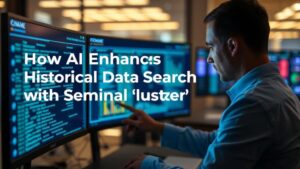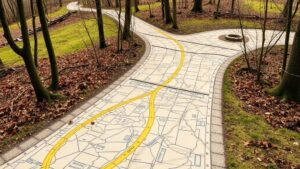Using AI to Simulate Historical Settlement Shifts for Artifact Research
Introduction
The study of historical settlements and their shifts holds significant importance in archaeological research. These shifts provide insights into socio-economic dynamics, environmental changes, and cultural evolutions. The advent of artificial intelligence (AI) offers new methodologies for analyzing and simulating these shifts, allowing researchers to uncover patterns that might not be visible through traditional methods. This paper discusses the application of AI in simulating historical settlement shifts, particularly in artifact research, and highlights its potential benefits and challenges.
Historical Context of Settlement Shifts
Settlement shifts refer to the movement and transformation of communities over time in response to various factors such as environmental changes, resource availability, and social dynamics. For example, during the late Neolithic period (circa 4500-2000 BC), the advent of agriculture led to significant changes in settlement patterns across Europe, as clans moved from nomadic lifestyles to more permanent settlements. This period saw the rise of complex societies, as exemplified by the Çatalhöyük settlement in modern-day Turkey, which hosted thousands of inhabitants and featured intricate structures and communal living spaces.
The Role of Artifacts
Artifacts play a crucial role in understanding historical settlements. provide tangible evidence of past human activities, cultural practices, and technological advancements. For example, the presence of pottery shards, tools, and other material culture can help archaeologists discern trade routes and social hierarchies. But, the sheer volume of artifacts recovered from archaeological sites poses a challenge in analyzing their significance and determining settlement patterns effectively.
AI Technology in Artifact Research
AI technologies, particularly machine learning and data modeling, have emerged as powerful tools in archaeological research. By harnessing large datasets derived from historical records and excavation data, researchers can use AI algorithms to simulate and predict settlement shifts based on various parameters.
Data Processing and Analysis
AI can process vast amounts of archaeological data quickly, identifying trends and correlations that may elude human analysts. For example, a study conducted by Geva and colleagues (2020) demonstrated the effectiveness of AI in analyzing ancient settlement patterns in the Near East, revealing correlations between climatic data and settlement distributions.
- Machine learning algorithms can classify artifacts based on features such as material composition, style, and manufacturing techniques.
- Predictive modeling can assess the likelihood of settlement locations based on geographic and environmental variables.
Case Studies of AI Useation
One notable case study is the work conducted at the site of Pompeii, Italy. Researchers have begun employing AI to analyze the spatial distribution of artifacts within the ruins. By utilizing deep learning algorithms, they have successfully mapped the density and diversity of artifacts across different sectors of the city, allowing for a better understanding of economic activities and social organization before the catastrophic eruption of Mount Vesuvius in 79 AD.
Advantages of Using AI
The integration of AI into archaeological research offers several benefits:
- Efficiency: AI processes data faster than traditional methods, enabling researchers to analyze results within a fraction of the time.
- Scalability: Algorithms can be designed to incorporate increasingly larger datasets, thus improving the robustness of findings.
- Predictive Capabilities: AI models can forecast potential future shifts based on historical data and trends.
Challenges and Ethical Considerations
Despite the advantages, the use of AI in archaeological research is not without its challenges. Concerns regarding data quality, model interpretability, and ethical implications arise. For example, biases in training data could skew results, leading to misleading interpretations of historical events. Also, the question of ownership and representation of cultural heritage is crucial, particularly when indigenous artifacts are involved.
Addressing Potential Concerns
To mitigate these challenges, researchers must adopt rigorous methodologies that include:
- Comprehensive data cleansing to ensure accuracy and reliability.
- Transparent algorithms that allow peer review and replication of results.
- Engagement with local communities to respect cultural sensitivities and perspectives.
Conclusion
AI in simulating historical settlement shifts and analyzing artifacts presents a transformative opportunity in archaeological research. By harnessing the computational power of AI, researchers can delve deeper into the complexities of past human societies and their interactions with the environment. Moving forward, it is crucial to address ethical considerations and ensure responsible use of this technology to foster a more comprehensive understanding of our shared history.



